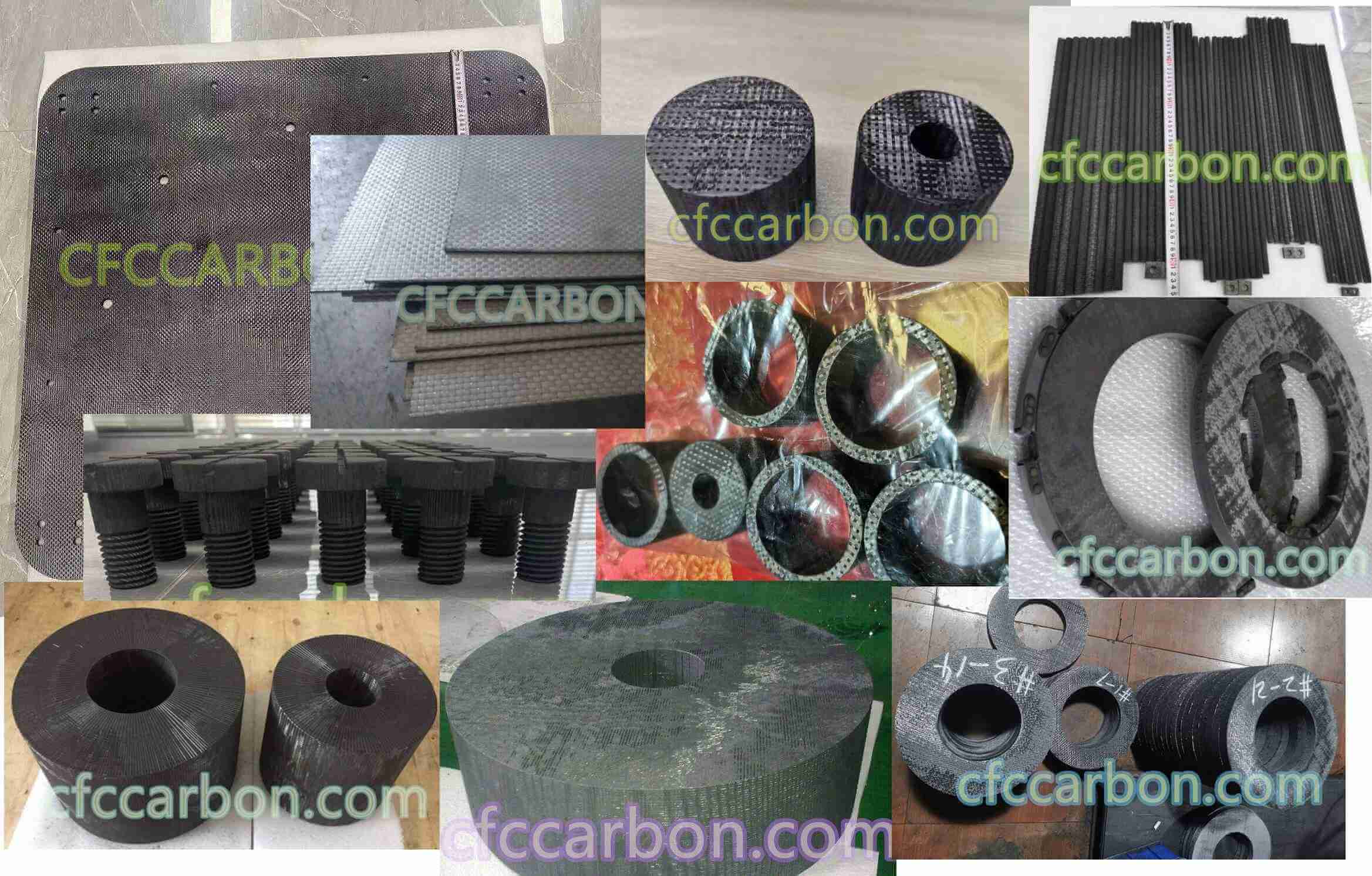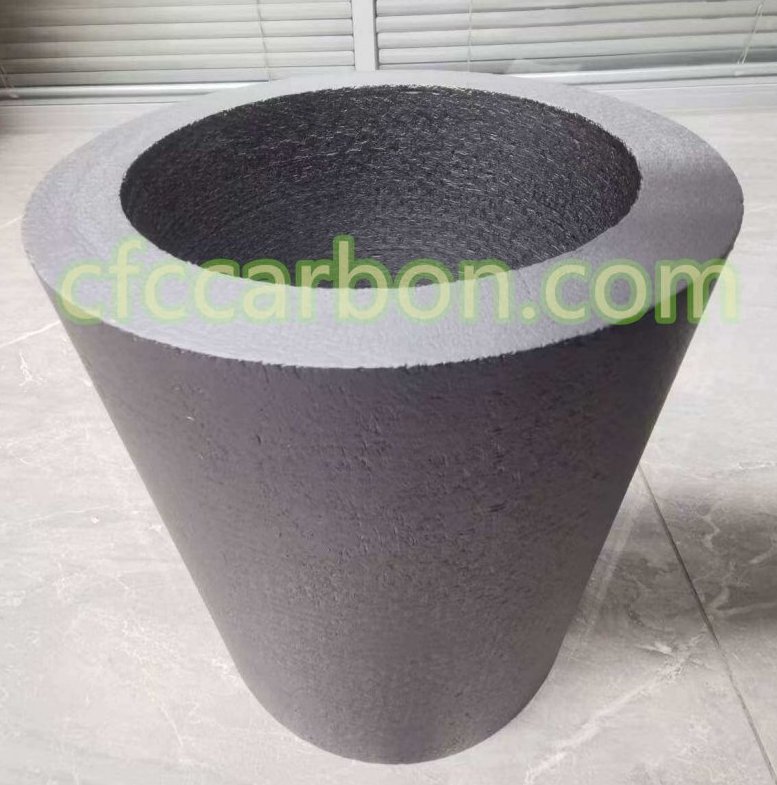The oxidation of CC composite and various forms of carbon has been the subject of many research studies. Reports indicate that at high temperatures the rate controlling step is oxygen diffusion through a boundary layer of reaction product. At lower relative temperatures a surface reaction controls the oxidation rate. The oxidation of CC composite should not differ extensively from that of various carbons.
The oxidation of carbon follows a normal Arrhenius type of relationship of the form:
Rate=A exp(-E/RT)
Where A is a preexponential term; E is the experimental activation energy; R is the gas constant; and T is the absolute temperature. Typical

carbon fiber composite material manufacturer in China(1)
values obtained for E in the chemical controlled temperature range are: 44 Kcal/mol for graphite by Tyson; 40-56 Kcal/mol by Serpinet; 41.5 Kcal/mol for Rhee and Chang; 42 Kcal/mol by Eyring and Blyholder; and 39 Kcal/mol for spectroscopic carbon by Gulbransen. The values for E in the diffusion controlled regime are about 1 Kcal/mol.
The processes involved in the chemically-controlled regime have not been described precisely. Eyring and Blyholder proposed that desorption of CO (g), which has an activation energy of 40 kcal/mol was rate controlling. Gulbransen et. Al. proposed the adsorption of oxygen was rate controlling for thick specimens.
Wicke classified the activation energy for the oxidation of carbon into three regimes described in terms of the oxygen concentration at the specimen surface. In the first regime, the oxygen concentration is the same over all the active surface of the sample. The activation energy obtained in this case is the true activation energy for the surface controlled reaction. The second regime is described by an oxygen concentration at the specimen surface which is less than that in the bulk gas. The activation energy in this case is 0.5 of the activation energy for a surface controlled reaction. In the third regime, gas diffusion through a boundary layer is controlling, i.e., the oxygen concentration is low at active surfaces. In this case the value for the activation energy is small, tending toward zero.

SiC coating carbon fiber composite material-CC-CFC (2)
The oxidation rate of carbon changes with microstructure. Carbon occurs in many structures including: diamond, glassy, pyrolytic, and graphite. Generally, the more graphitic a carbon, the less reactive it tends to be. The total reaction rate, however, depends on impurities and pore structure.
Pore structure can influence the oxidation rate of carbon. Rienoso and Walker found that a glassy carbon had an oxidation rate slower than that of a more graphitic pyrolytic carbon. The glassy carbon had no connected porosity so the active surface area remained constant during oxidation. The pyrolytc carbon had connected network of porosity that caused the active surface area to increase with oxidation resulting in faster overall rates.
Impurities can also influence carbon oxidation. Most elements catalyze the oxidation of carbon. The catalysts increase the oxidation by either an electron transfer mechanism or an oxygen transfer mechanism. Notable exceptions are P and B without water. These two elements inhibit the oxidation of carbon.
The surface area to volume ratio of the carbon can affect the oxidation behavior by increasing the surface temperature as a result of the exothermic oxidation of the carbon. Gulbransen calculated a 90C temperature increase at the surface for a sample at 1200C and a surface area of 0.13cm2. This sample size was small enough to avoid limiting the rate of reaction because of oxygen consumption, i.e., oxidation was controlled by a surface reaction.
Several authors have reported a change in surface area, usually an increase, with oxidation exposure. If the surface area increases, the overall oxidation rate increases unless a correction is made. The surface area change also makes the observation of true oxidation rates difficult.
In summary, the oxidation of carbon has been extensively studied. The rate determining step for the oxidation process at temperatures below 600-800C is a phase boundary reaction involving the adsorption-dissociation-desorption of oxygen molecules, CO, and CO2. At higher temperatures the rates are controlled by diffusion of oxygen, CO, and CO2 through a gaseous boundary layer at the specimen surface.
related news /articles:
High-temperature treatment of 2D carbon-carbon composite materials. (1)
Catalytic oxidation of carbon-carbon composite aircraft brakes (2)
Oxidation behavior of uncoated CC composite in dry oxygen
High-temperature treatment of carbon-carbon composite materials (5)